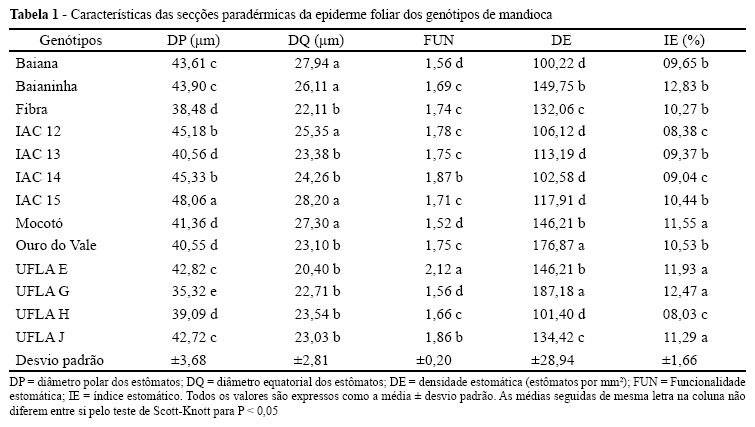Cassava is an important plant, cultivated in tropical regions, possessing great genetic variability which has still hardly been studied. The objective of this work was to examine the leaf anatomy of thirteen genotypes to assess their potential for adaptation in different environmental conditions. Fully unfolded leaves were collected from thirteen cassava genotypes being analyzed for quantitative changes in internal structure using optical microscopy. The experimental design was completely randomized with 12 replications and 13 treatments, the data were submitted to ANOVA and the Scott-Knott test. The different genotypes displayed great anatomical plasticity for most characters, with the most important changes occurring in the density and size of the stomata, tissue thickness of the abaxial epidermis, of the palisade and spongy parenchyma, in the phloem and xylem. The UFLA E, IAC 14 and UFLA J genotypes displayed as possibilities for xeric conditions, due to a high stomatal density, smaller stomata, a thicker adaxial epidermis, thicker palisade and spongy parenchyma, lower vulnerability of the xylem and greater thickness of the phloem, which would allow reduction in transpiration and better use of a large amount of incident radiation. The other genotypes exhibit more mesophytic features. Thus, cassava genotypes have anatomical plasticity, and can display the potential for selection of desirable characteristics for different environmental conditions.
Cassava; Leaf anatomy; Drought effect-plants; Euphorbiaceae



